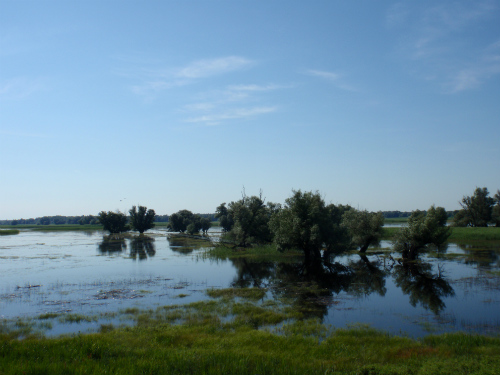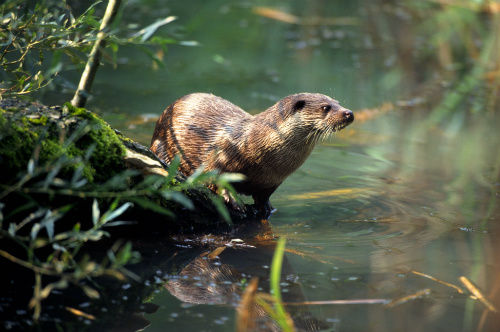Goals
River Drava is one of Europe’s treasure troves of biological diversity. It is a hot spot of natural habitats, which are now rare in Europe, such as large and very well preserved floodplain forests, river islands, gravel and sand banks, side branches and oxbows. The river and its riparian habitats are home to species, like white-tailed eagle, black stork, little tern, or sand martin.
Despite unique ecological status, Drava is not an unregulated river. During the regulations in the 20th century, many meanders were cut from the river. These meanders are now side-arms, which get water only during high  water levels, or oxbows, which do not communicate with the main river course any more. The longest ox-bow on the left side of the river is the Old-Drava, upstream the town of Barcs (HU) and on the area of municipality Pitomača (HR). Water supply of the Old-Drava is not sufficient, especially during long dry seasons, and that’s why ecological status of floodplain forests along it started degradation in the previous decades.
water levels, or oxbows, which do not communicate with the main river course any more. The longest ox-bow on the left side of the river is the Old-Drava, upstream the town of Barcs (HU) and on the area of municipality Pitomača (HR). Water supply of the Old-Drava is not sufficient, especially during long dry seasons, and that’s why ecological status of floodplain forests along it started degradation in the previous decades.
Responsible authorities and engaged NGOs from both countries along the river, Croatia and Hungary, started cooperation for trying find solutions against the harmful degradation process, and developed a project proposal for the restoration of the Old-Drava. The LIFE+ Nature program supports this initiative, and a four-year project started in 2014. The project leader is Danube-Drava National Park Directorate, and its partners are Municipality of Pitomaca, Virovitica-Podravina County's Regional Development Agency - Vidra, Public Institution for management of protected parts of nature and ecological network in Virovitica-podravina County, WWF Hungary and Angling Association of Somogy County.
The project’s main objective is to contribute to the conservation and resilience of the riparian habitat through improving the water regime and improving biodiversity status of floodplain forest along the oxbow.
The restoration includes the stabilization of sufficient water level by water retention structures in the oxbow, and the improvement of water supply from the main course of river Drava. The improved water level  will secure the favourable conditions for the alluvial forest, as well as will provide favourable ecological circumstances for other aquatic habitats. By planting native tree and shrub species we improve diversity of forest habitats.
will secure the favourable conditions for the alluvial forest, as well as will provide favourable ecological circumstances for other aquatic habitats. By planting native tree and shrub species we improve diversity of forest habitats.
There is significant human activity within the project area, especially the angling has considerable pressure on nature. The project intends to harmonize human activities and nature conservation tasks. Campaigns target the local anglers, involving them to remove abandoned angling platforms and other litter from the oxbow.
The project intends to raise public awareness by various types of communicational tools (on-line quiz, e-study trail, leaflets, video). Once, the wide public understands dynamic processes and values of floodplains, a sustainable and environment friendly way of management will be supported by them, not only in project area, but even on other floodplains.
Furthermore, the project can justify that these measures will positively affect not only the natural values, but local inhabitants can also have direct benefits from them.
The total costs of actions in LIFE Old-Drava project (LIFE13 NAT/HU/000388) is € 834,006, the EU contribution is € 623,674. The project is running with the co-financing of Ministry of Agriculture (Hungary) and the Coca-Cola Foundation.